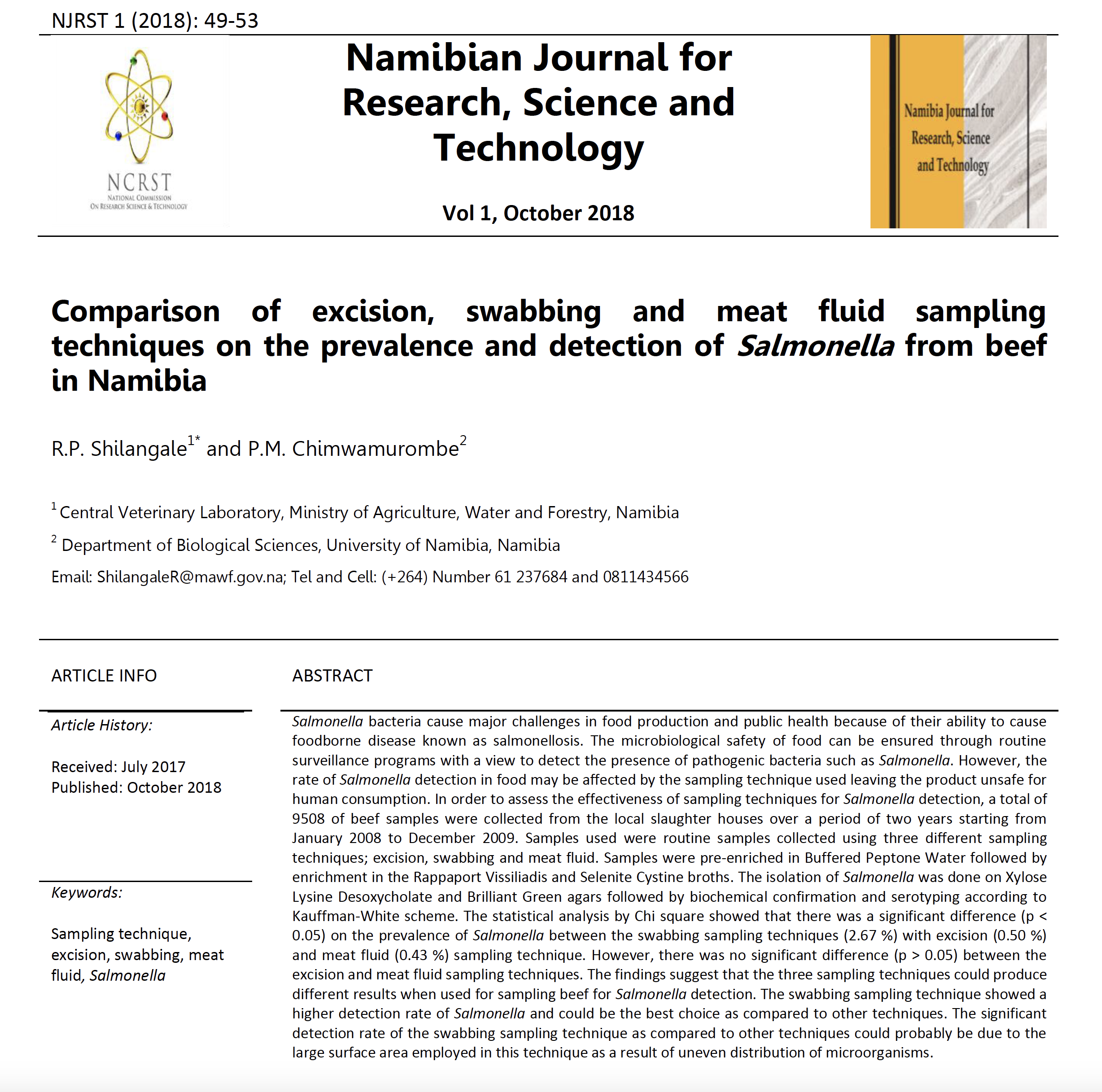Comparison of excision, swabbing and meat fluid sampling techniques on the prevalence and detection of Salmonella from beef in Namibia
Main Article Content
Abstract
Salmonella bacteria cause major challenges in food production and public health because of their ability to cause foodborne disease known as salmonellosis. The microbiological safety of food can be ensured through routine surveillance programs with a view to detect the presence of pathogenic bacteria such as Salmonella. However, the rate of Salmonella detection in food may be affected by the sampling technique used leaving the product unsafe for human consumption. In order to assess the effectiveness of sampling techniques for Salmonella detection, a total of 9508 of beef samples were collected from the local slaughter houses over a period of two years starting from January 2008 to December 2009. Samples used were routine samples collected using three different sampling techniques; excision, swabbing and meat fluid. Samples were pre-enriched in Buffered Peptone Water followed by enrichment in the Rappaport Vissiliadis and Selenite Cystine broths. The isolation of Salmonella was done on Xylose Lysine Desoxycholate and Brilliant Green agars followed by biochemical confirmation and serotyping according to Kauffman-White scheme. The statistical analysis by Chi square showed that there was a significant difference (p < 0.05) on the prevalence of Salmonella between the swabbing sampling techniques (2.67 %) with excision (0.50 %) and meat fluid (0.43 %) sampling technique. However, there was no significant difference (p > 0.05) between the excision and meat fluid sampling techniques. The findings suggest that the three sampling techniques could produce different results when used for sampling beef for Salmonella detection. The swabbing sampling technique showed a higher detection rate of Salmonella and could be the best choice as compared to other techniques. The significant detection rate of the swabbing sampling technique as compared to other techniques could probably be due to the large surface area employed in this technique as a result of uneven distribution of microorganisms.
Article Details

This work is licensed under a Creative Commons Attribution 4.0 International License.

